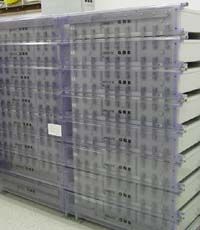Download our free Monitoring Fundamentals Tutorial.
An introduction to Monitoring Fundamentals strictly from the perspective of telecom network alarm management.
1-800-693-0351
Have a specific question? Ask our team of expert engineers and get a specific answer!
Sign up for the next DPS Factory Training!

Whether you're new to our equipment or you've used it for years, DPS factory training is the best way to get more from your monitoring.
Reserve Your Seat TodayYour first step to get your alarm monitoring upgrade rolling is a complete survey of your current network and remote sites. This survey will document your existing alarm monitoring situation, in order to build a road map for your upgrade.
In your site survey, you're looking for three things:
1. The equipment you need to monitor and the number of alarm points you'll need to monitor it.
2. The currently available data transport between your remote sites and your Network Operations Center (NOC) - the office where your alarm presentation master is located.
3. Any existing alarm collection and presentation equipment you already have. You may be able to save money by incorporating your existing alarm equipment into your new, upgraded alarm system.
(DPS Telecom offers a five-page Remote Site Survey template that will help you organize your network and remote site survey. See box: "DPS Telecom Remote Site Survey.")
Now let's look at what kind of network equipment you should be monitoring.

It takes a lot of equipment working together correctly to keep your network running, and you need accurate information about every element involved. You want to make sure that every piece of equipment can be remotely monitored and maintained - at least to a degree.
That means monitoring not only your base telecom equipment, but also all the equipment that supports it and the environmental conditions that all your equipment requires to operate correctly, such as temperature and humidity. The things you need to monitor fall into four categories:
Don't settle for monitoring your revenue-generating equipment with simple summary alarms that just tell you whether the equipment is up or down. Ideally, you want a comprehensive series of alarms that identify problems down to the card level.